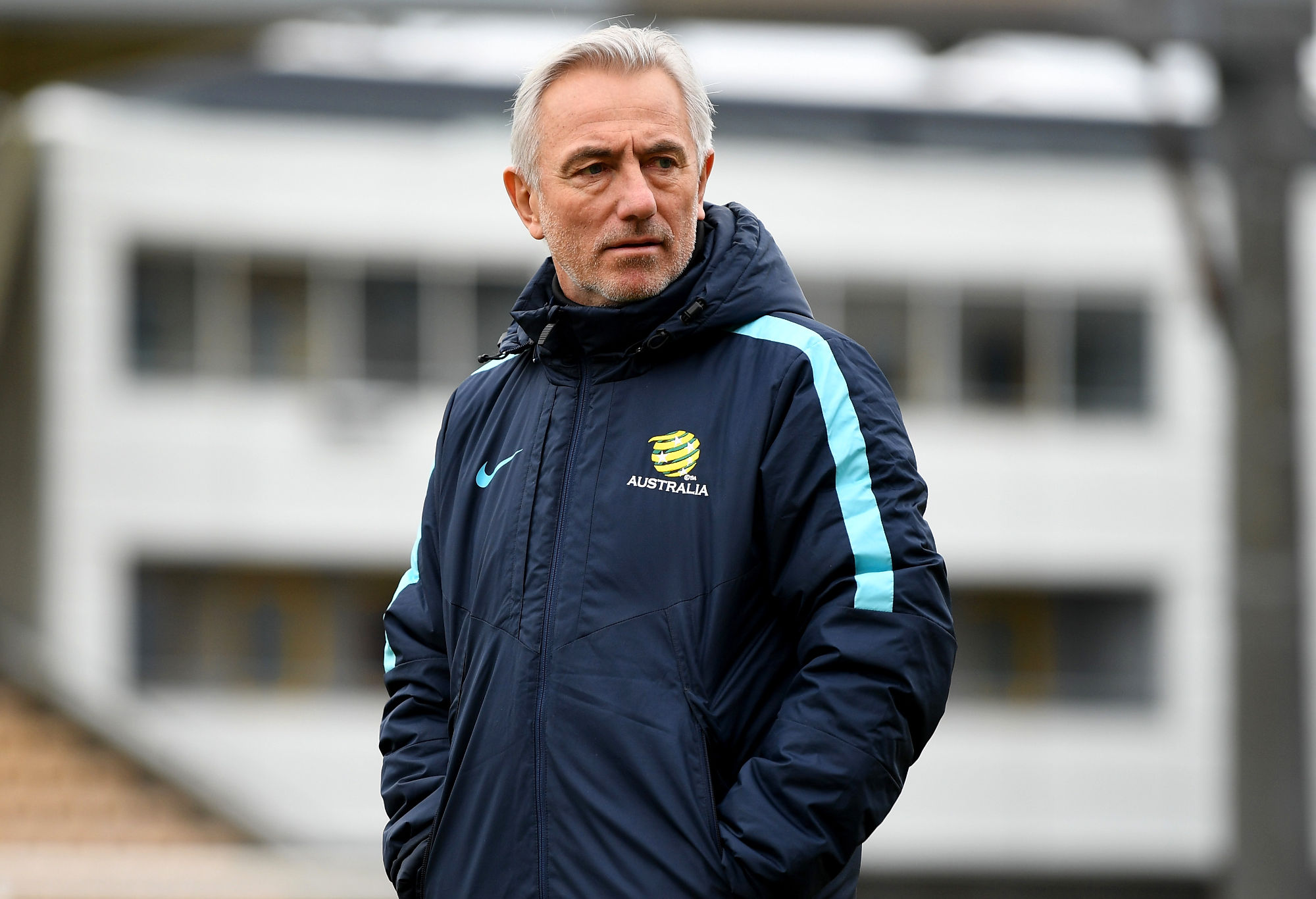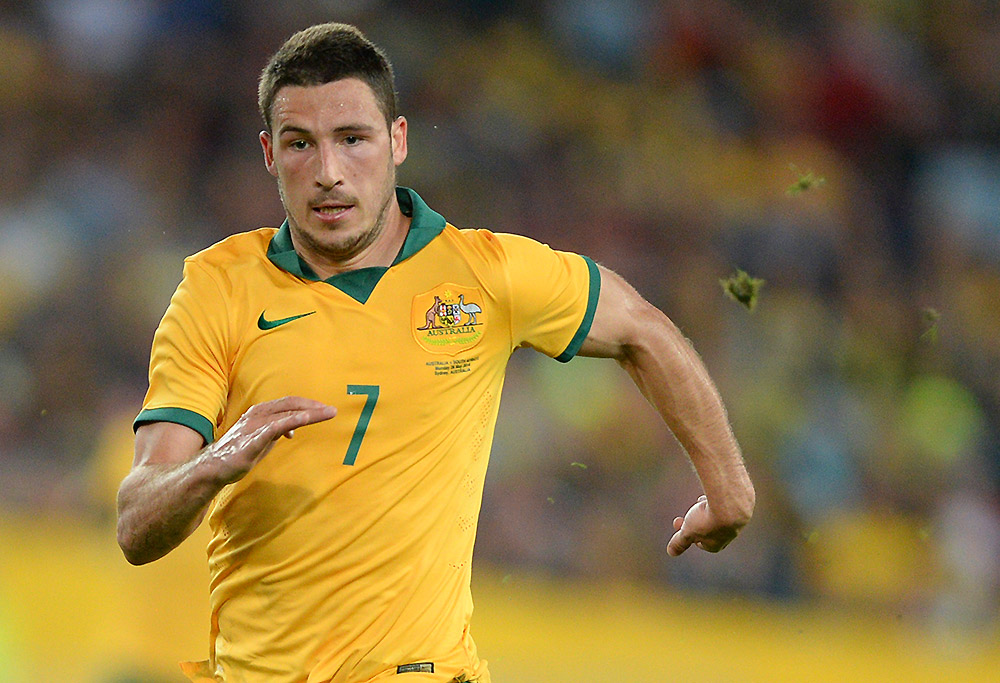Young excellence, promotion battles, and a happy farewell: The Australian team of the week from players around the globe
Even though St.Pauli ultimately lost a high-scoring affair, Jackson Irvine was a standout, as well as scoring a late goal.

In most Socceroo sessions of ‘getting out of this group’ banter, beating Peru is an essential part of the equation.
In fact, beating Peru might seem a fait accompli to many Socceroo fans who have lived through our team clawing results from illustrious Balkan nations in competitions past.
Largely our hope is predicated on the fact that, put simply, we’ve never heard of most of their players, and that they didn’t blow our Tasman neighbours away in qualifying for Russia.
And although they didn’t score away to New Zealand, they did control their own destiny against the All Whites in Lima, and looked good for the 2-0 result.
They did enough to keep a fairly languid New Zealand team out while missing a couple of good chances to extend their lead through relentless balls and attackers in the box.
To the question of “who are these guys?” – a couple of them are fairly well known. Their best known (and media covered) player Paolo Guerrero won’t be there – banned for a year by FIFA, which was reduced and then increased again by WADA.
Jefferson Farfan, their next ‘most famous’ player was a Bundesliga mainstay for years with Schalke, but now at 33 is plying his tricks at Lokomotiv Moskow.
Despite being on the south-side of his career, Farfan doesn’t seem diminished in pace or guile. The rest of the squad frankly resemble jobbers from various leagues in Latin America – with a couple of notable exceptions whose names Socceroo fans will well and truly know by the end of this World Cup.
Let’s start with 22-year-old Renato Tapia – their deep lying central midfielder who is something of a Regista – who is with Feyenood. Next there’s 26-year-old Andre Carillo, their right sided forward in their 4-3-3 who was a regular for Watford in the first half of last season.
Carillo will terrorise teams with his pace and ability to spring a back four, and is a key outlet pass option for Peru who look wide to transition forward quickly and directly at times. (note: Carillo was kicked out of the game in their recent friendly against Scotland, however he was able to run on and ran off when he was subbed).
[latest_videos_strip category=“football” name=“Football”]
In many ways they are a South American ‘us’. They are a mix of high functioning professionals in good competitive (albeit not marquee) leagues. While their team – like ours – isn’t overflowing with top-class top-league options, there is a clear tactical thumbprint on this team that elevates their play beyond puns about their capital city’s position above sea level.
Peru keep possession in a way that would make Ange Postecoglou drool, but are also able to switch tempo rapidly on a dime by picking on the speed of their wide players with long direct passes. They are to a man quick, athletic, strong, aggressive and excellently drilled.
Despite favouring a possession style they are also not afraid to take risks with their passes. A key facet of Peru’s play is that they are willing to take chances and back themselves. If some of their optimistic through-balls come off they could really surprise the so-called heavyweights of the group Denmark and France.
Approach and formation
Peru line up in a 4-3-3 which is at times resembles a Christmas tree especially when they built-up patiently. Their fullbacks overlap extremely high up the park, which allows their wide forwards to cut inside to the half spaces to create triangles with their central mids and targetman (usually Farfan).
They are energetic, and prefer to play short passes to hold possession. However, they are not afraid to challenge their opponents with long vertical passes.
They do this to quickly alter the tempo of the game, which they can pull off spectacularly through the pace of their wide-men, but they also aren’t afraid to run at defensive lines to find pockets of space, to then bring in their “wide” players who drift in to offer short passing options.
Attack
Peru transitions into the forward phase through a mix of patient build-up play and long diagonal balls. When able, they bring their fullbacks up very high to create more chances to hold possession through short passes, and from wide they can whip balls in to up to four players in the box.
They are not afraid to push men very high into the box, including their central midfielders. Against New Zealand, at times the All Whites were battered with wave after wave of attack with five or six Peruvians deep inside the All White defensive third.
Their forward three are compact, and rarely venture into the wide spaces – conceding those to their fullbacks. Their central midfield three is fluid, with two preferring to provide cover while the other midfielder drifts forward into pockets and also to get in the box.
Their main forward threat is Farfan, but his principle role is to support in the build-up but then get on the end of direct passes into the box. However their front three are fluid, all rather clever off the ball and able to get behind defences. They are also ready willing and able to shoot from distance if given the room.
To boost the tempo they point vertical outlet passes wide, hitting the right side (and Carillo) often in the recently friendly against Scotland, striking balls either to the feet of the wide man or looking to play him in behind the line to leverage his pace.
There the long passing skills of all of their midfielders, most notably Yoshimar Yoftun (who plays in the US for Orlando City), are particularly dangerous.

Aussie coach Bert van Marwijk (Photo by Michael Regan/Getty Images)
Defence
Peru settle into a narrow 4-3-3, with the central midfielder, Tapia usually, dropping deep sometimes into a pseudo back five when needed.
As they like to get bodies forward, they don’t heavily press in their forward third and allow their opponents possession in defence to buy enough time to get their players (including their fullbacks) back into their defensive shape.
Rather than press as a rule to win back possession, they back their speed and endurance to get quickly back into shape to prevent exposing themselves to counter attacks.
The exception here is that they do like to gegenpress, especially if they lose possession wide in their forward third, and often have a fairly high defensive line to compact the space their opponents can play into.
While in the low block they are compact, and the fullbacks tuck inside conceding the wide space. All of their back four are able very comfortable on the ball and are able to hold possession, bide their time, and play a range of passes when they look to build-up patiently.
How we can get over them
The Socceroos vs Peru game represents a battle of competing styles, and Bert Van Marwijk’s tactics are probably best suited to Peru of all our opponents.
While Peru has some serious muscle, they patently aren’t Brazil ’70. A well drilled defensive shape, with fullbacks who don’t present too high, and where (ideally) two players sit centrally in front of the back four (as BvM favours) will make it difficult for Peru to penetrate.
Peru love to keep possession, but they are also empowered to take chances and not all of their forward passes come off, which will create turnover chances for Australia’s quicker midfielders who can block passing lanes.
Against Peru the central midfield combination of Aaron Mooy and Mass Luongo seems the most logical, as they will both be quick enough (relatively speaking) to close down or block Peru’s build up play, but also we able to transition quickly to expose Peru’s high line.

Aaron Mooy of the Socceroos celebrates. (Photo by Matt King/Getty Images)
Ironically in defence it might be Aziz Behich who could have his area targeted with direct long passes if he is drawn too far forward.
The big risk for the Socceroos will be giving away possession in midfield too easily – our kryptonite in Asian qualifying.
Poor defensive shape and structure will also be exploited verily by this crafty Peruvian team. Our fullbacks will need to be compact to not allow their wide forwards possession in the half spaces, where they will torture our centre backs and pull them out of position.
The back four will need to be compact and amiably supported by a couple of central midfielders who can sit deep, but also have the skill to transition quickly if we win possession.
Most teams would not have the pace to easily spring Peru on a counter, but Australia does. In the forward phase our best options will be wide players exposing Peru’s aggressive fullbacks.
Matt Leckie jumps out here on one side and, after two gruelling games the other wide player will invariably he who stands tallest for BvM in the first two games.

Matt Leckie (AAP Image/Lukas Coch)
Gut points to a player like Andrew Nabbout leading the line for this one, and it also suggests that this could be the game that introduces Daniel Arzani to the world. If BvM can construct a defensive block that has another central midfielder pull wide to mark Peru’s fullbacks, that will allow us to maintain some wide players who can be sprung in the counter.
Wingers with genuine speed like Leckie and Arzani (or Nabbout) who aren’t afraid to run at defenders, with an “enganche” like Tom Rogic directing possession centrally will offer Australia real hope to both weather Peru’s attacks but also create chances at the other end.
Ultimately Peru’s adventurousness and risk taking appetite should be what is used against them.